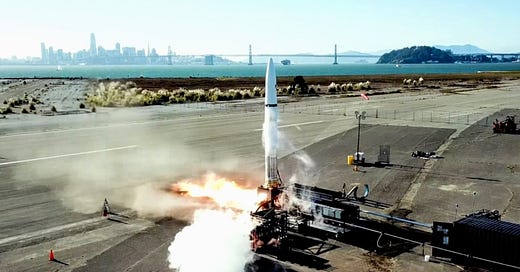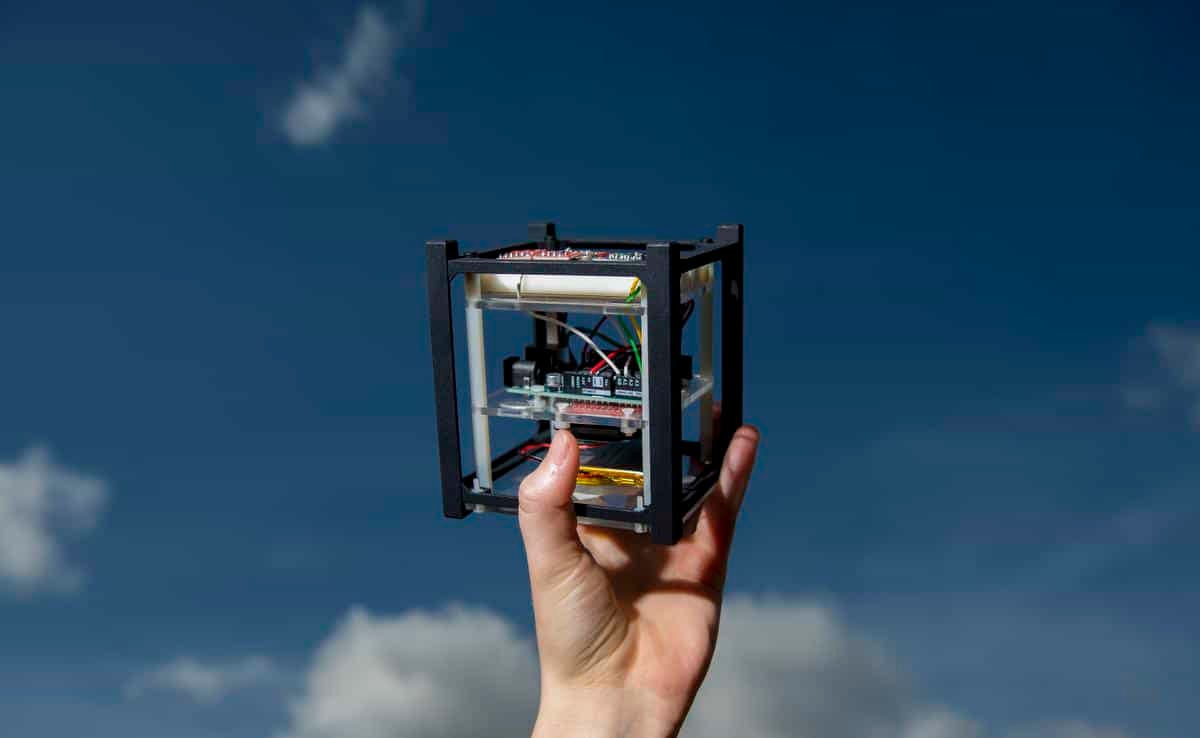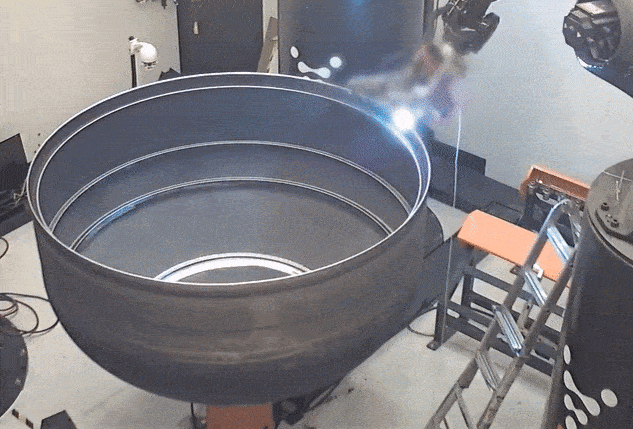The Launch Landscape: Small Rockets
A small step for rockets, a giant leap for people into small rockets
Up until a few decades ago, satellites were all big. Real big. School bus sized big.
Many satellites are still big. But also, some of them now are small. Real small. Toaster sized small.
The miniaturization of electronics that has down-sized the computers in our pockets has also affected how big our satellites need to be in order to accomplish their missions.
Similarly, decades ago rockets needed to be big because they were only carrying big things, such as large satellites, humans in capsules, planetary rovers, etc. Now, with these newer satellites in smaller packages, theres a market for rockets with smaller lifting capacities.
Small launch vehicles aren’t entirely novel. Some, like the Pegasus rocket developed by Orbital Sciences in the 1980’s, have been around for decades. What distinguishes many of the newer small launch vehicles of the past 10 years is that this new wave of small rocket providers is largely backed by venture capital investors. This has merged the worlds of space technology and silicon valley investing in an experiment which many are watching very closely to see how it pays off.
This post will address some critical topics of this burgeoning segment of the space industry.
Table of Contents
A survey of small rockets
Rideshare on big rockets as an alternative to small rockets
Supply and demand for small satellite launch
How do small launch companies potentially adapt to the competition?
Small Rocket Survey

Rocket 3
Organization: Astra
Headquarters: Alameda, CA, United States
Payload Capacity: 200 kg max to LEO
Maturity: In Development, nearly reached orbit in January 2021
Astra’s Rocket 3 is the smallest venture backed launch vehicle entering the market in the immediate future, lifting up to 200kg to orbit. Charging about $2.5M per launch and hoping to bring that down to $1M at scale, Astra offers the cheapest way to buy a rocket launch. The organization aims to make its launch infrastructure extremely lean, with the goal of being able to pack the launch equipment into a few shipping containers, ship it to its launch site, and launch the rocket with only six people on location. The company is located near the heart of the San Francisco Bay Area and tests its engines on a former naval base overlooking San Francisco (though no launches are conducted from there). Astra has made two orbital launch attempts with the most recent in January 2021 reaching space and coming only just short of orbit.
Electron
Organization: Rocket Lab
Headquarters: Long Beach, CA, United States
Payload Capacity: 300 kg max to LEO
Maturity: Currently Flying, first reached orbit 2018
RocketLab’s Electron launch vehicle began development in the early 2010’s making it the oldest venture-backed small launch vehicle thats still around. It was also the first to reach orbit back in 2018. Electron remains the only commercial small launch vehicle to have flown to orbit multiple times and has done so 19 times so far. Electron has approached a launch cadence of once per month and is aiming to increase that rate by reusing their first stage boosters instead of building a new one with every launch. RocketLab aims to do this by catching the rocket’s first stage with a helicopter as it glides back to earth on a parachute (as seen below). RocketLab’s being first to market gives it an important head start as it seeks to capture significant revenue before competitors begin launching and potentially push prices down.
LauncherOne
Organization: Virgin Orbit
Headquarters: Long Beach, CA, United States
Payload Capacity: 500 kg max to LEO
Maturity: Currently Flying, first reached orbit January 2021
LauncherOne is built by Virgin Orbit, a wholly separate entity from the suborbital space tourism company Virgin Galactic. LauncherOne is a typical two stage rocket, but differs in what happens before its engine is lit. LauncherOne is first carried beneath the wing of a 747 aircraft (nicknamed Cosmic Girl) and dropped from about 35,000 ft. From there, its first stage engine ignites and points the rocket up towards space. The vehicle’s unique launch method makes it independent of complicated ground launch infrastructure. Furthermore, Cosmic Girl can take off from any runway, allowing LauncherOne to be extremely flexible about where it launches from. The dependency on an additional specialized vehicle however introduces another potential failure point. Any issues with Cosmic Girl would ground LauncherOne as well. On January 17th, 2021 LauncherOne reached orbit for the first time and is expected to have its next launch attempt in the coming months.
Alpha
Organization: Firefly Aerospace
Headquarters: Cedar Park, TX, United States
Payload Capacity: 1,000 kg to LEO
Maturity: In Development, first launch planned for summer 2021
Firefly’s Alpha may be the next rocket on this list to reach orbit, with its first orbital launch attempt planned for late June 2021. Firefly has been developing the Alpha rocket since 2014, with the organization originally under the name Firefly Space Systems. After three years, the company ran out of funding in 2017 and entered bankruptcy before being acquired at auction and re-formed as Firefly Aerospace. The new ownership is Noosphere Ventures, an investment fund led by a Ukrainian investor. At $15M per launch, Alpha is currently projected as the most expensive rocket on this list, which may be due to the company’s plan to be the first small rocket capable of carrying at least 1,000 kg to reach orbit. Upcoming competition may impact their ability to maintain that price.
Terran 1
Organization: Relativity Space
Headquarters: Long Beach, CA, United States
Payload Capacity: 1,250 kg max to LEO
Maturity: In Development, first launch attempt planned late 2021
Relativity is attempting the most ambitious means to building a small rocket. They want to 3D print the whole vehicle. Also they want to do it with a massive proprietary 3D printer named Stargate, which they are also inventing. The ultimate goal being that one day, they can put the printer on Mars and pump out as many rockets as they’d like. Either building an entirely new 3D printing method or developing a new rocket system would be a lofty objective in their own rights. That’s likely why Relativity has raised the biggest war chest of venture capital funding of any company on this list, about $1.34B so far. However if Relativity can pull it off, the upside may be particularly favorable with potential independent revenue streams from both its 3D printing technology and rocket launches. Relativity is aiming for its first Terran 1 launch by the end of 2021.
RS1
Organization: ABL Space Systems
Headquarters: Long Beach, CA, United States
Payload Capacity: 1,350 kg max to LEO
Maturity: In Development, first launch attempt planned Q3 2021
ABL emphasizes that its not trying to reinvent the wheel with its rocket, leveraging tried and true design and manufacturing approaches. Consequently, the company has raised a relatively small amount of capital to achieve that plan. Until a recent March 2021 fundraise of $170 million, the organization had reportedly spent less than $50 million on its rocket development over its first few years. Notably, Lockheed Martin has been an early strategic investor in ABL and the partnership seems to be mutually beneficial. In April 2021 Lockheed announced a block buy of up to 26 ABL launches through 2025 giving Lockheed access to affordable small launch and ABL a key anchor customer. The company projects its first test launch by the end of 2021.
Vega
Organization: European Space Agency
Headquarters: European Union
Payload Class: 2,500 kg Max to LEO
Maturity: Currently Flying, first reached orbit February 2012
Vega is the largest rocket on this list, however its not built by a private organization or back by venture capital funding. Instead it is designed and manufactured by an entire government, or more appropriately a union of governments. Vega is built by the European Space Agency. While technically able to lift up to 2,500 kg to LEO, Vega typically carries satellites less than 2,000 kg up to higher orbits, which is why it remains on this list. Vega has been flying since 2012 and has been consistently launching about two or three times a year since. A Vega launch costs about $37M. It can still lift more than any other small launcher on this list, but does so at three times the price. Consequently, once the competition is flying regularly, Vega might end up losing much of its market share and be reserved simply for launching national security satellites for European Union nations.
What About Rideshare?
If you’re trying to get a small satellite into space, small lift vehicles aren’t your only option. You can also hitch a ride on a bigger rocket thats taking a bunch of satellites up at the same time. In the launch business this is referred to as rideshare. This is akin to taking the bus and getting dropped off in your neighborhood whereas a dedicated small launch would be like taking an Uber right to your door. For some satellites, getting most of the way to your destination is good enough and the cost savings of rideshare are critical. Other small satellite companies need to get into space ASAP and have to be placed into a very particular orbit. For them, paying for a dedicated small launch is well worth the cost. Putting up to 200kg in orbit on a Falcon 9 rideshare launch would cost about $1M, compared to $7M on a RocketLab Electron, which can carry up to 300kg.
Supply and Demand for Small Satellite Launch
Ask anyone paying close attention and they’ll tell you that there are a large number of companies developing small launch vehicles. Some reports put the number at over 80. The number of credible programs is probably closer to one to two dozen and the ones reaching market in the nearest term are those I included in this post (admittedly this list is very US centric because it is targeted at US investors and there are some notable international players, primarily in China). Many believe that there isn’t enough demand to sustain this number of launch providers. In May 2020, Rocket Lab CEO Peter Beck said himself “The market needs to grow a lot to sustain more than two companies.”
To better wrap my head around the market, I went through the 2020 calendar and counted every single satellite of less than 2,000kg launched into space. However, I excluded SpaceX’s Starlink satellites because those will likely be launched exclusively on SpaceX’s own rockets for the foreseeable future. In total, I counted 367. That seems pretty substantial. However, what about when you remove the OneWeb broadband internet satellites that were deployed on larger rockets 34 at a time and likely will be for the coming few years? There were 102 of these in 2020, bringing us down to 265. Then if you’re a US investor and want to quantify the market for the venture backed US based small launch vehicles on this list, its worth considering what the market looks like after removing the national security satellites originating from non-US nations that have their own domestic small launch providers and will likely launch on those rockets. Well thats another 69 and brings us down to 196.
So if 196 satellites launched in 2020 is reasonably indicative of the market size accessible to the US small launch providers, how many launches do we need to fulfill that demand? Maybe not as many as you’d think. In September 2020, a single Vega rocket launch carried 64 satellites to space. Even a small RocketLab Electron launch is capable of carrying a large number of satellites. In November 2020 an Electron launched 31 satellites at a time. Plus, rideshare launches on larger rockets seem to be growing in number as well. In January 2021, SpaceX launched 133 small satellites for commercial and government customers aboard a single Falcon 9 rocket. SpaceX has plans for a few of these rideshare launches every year, which could take market share away from the small launch providers.
So how many small launches are in fact needed per year? Demand can significantly fluctuate, but I would be fairly comfortable with anywhere from 6 to 30. With so many small launch vehicles coming to market in the coming year and some stating aspirational goals of one launch per week or even per day, this feels incongruous from the hundreds of launches per year that would be required to sustain all of the vehicles being developed.
What Are the Small Launch Providers To Do?
Well for one, they can hope the market expands, which actually isn’t a crazy idea to me. Maybe there were few launches in 2020 because there was a backlog of satellites waiting to be launched and once these new rockets hit the market, they will have plenty of waiting customers. Thats a real possibility and its what many of these companies are claiming. Astra CEO Chris Kemp recently stated “There’s a diverse and growing customer base for putting things into low-Earth orbit…Listen to customers, don’t listen to pundits and market analysts.” Fair enough (but also, ouch).
Furthermore, the applications of space-based data and infrastructure are multiplying by the day. Breakthrough technologies often achieve exponential growth and the emergence of mega-constellations of satellites has led to a significant rise in the number of satellites being launched. While those satellite constellations are typically deployed on larger rockets, there will likely be a trickle-down impact on demand for small launch as well.
However, if the demand for small launch doesn’t expand in the following years, how can an organization get ahead of those challenges? Some launch companies are looking at ways to capture more of the value chain. Consider RocketLab. With CEO Peter Beck being open about the oversupply of small launch, the company has begun targeting other opportunities to provide value to launch customers. For one, they’ve developed their own satellite bus Photon. With Photon, RocketLab can capture value that their customers would traditionally spend on third party satellite manufacturers. For example, an organization looking to take pictures of the Earth can simply tell RocketLab what they’re looking for and RocketLab can create the satellite to take the pictures, launch the satellite into orbit, and provide the customer with the requested imagery. A full end to end solution. In the past, the customer would have had to build and manage the satellite themselves.
RocketLab isn’t the only small launch provider looking to build new spacecraft products either. Astra has also demonstrated its interest in building satellite buses by acquiring a satellite propulsion company named Apollo Fusion. In addition, Firefly has won a contract to build a lunar lander to carry payload to the Moon’s surface for NASA.
Cheap Launch for All?
While the competition amongst small launch companies may be cutthroat for those organizations, the beneficiaries will be anyone paying to put a small satellite into space. Significant competition will push prices down for small launch and all the funding flowing into these companies might even result in temporarily subsidized launch prices. Just think of all the discounts from food delivery companies when huge investments were being made into DoorDash, Postmates, Grubhub, UberEats, etc. In fact, that very competition and resulting affordability in small launch will likely have a positive impact on the space ecosystem. As small launch costs get cheaper, we may find that new business cases make sense that previously would have been prohibitively expensive. Cheaper small launch may lead to the democratized access to space that we have been looking forward to for decades.
Additional Reading
Liked this read? Follow me on twitter for more frequent updates on the space world.
Want to read more about rockets? Check my previous post which included the SpaceX Falcon 9.















Very interesting article, of course the other side of the market is those customers who can't or won't launch on a US vehicle for either country of origin issues or commerical preference, that opens up a different market and then of course there is in-orbit manufacturing which is yet to manifest as a new market but has high potential.
Awesome write up! What kinds of interesting things are gonna go up in these smaller payloads as prices come down?